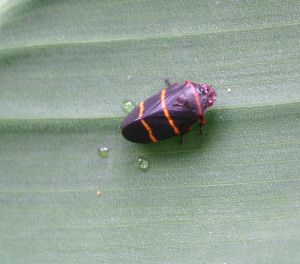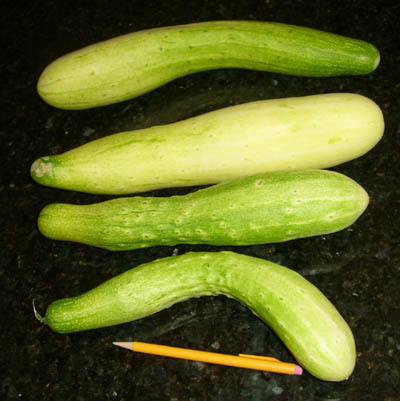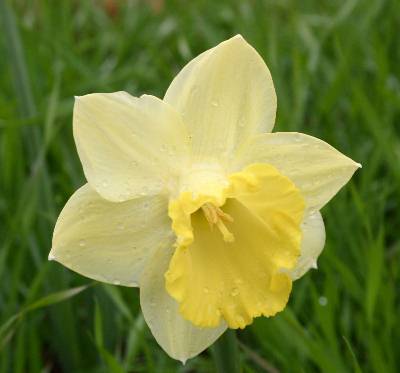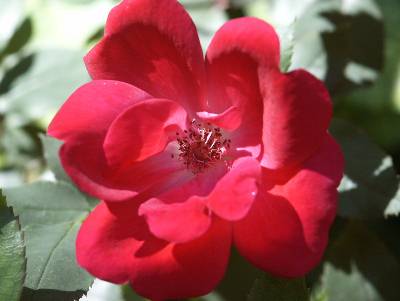SOD Update from Dr. Woodward

from Dr Jean Williams-Woodward
April 9, 2004
By now most of you may have already heard that Phytophthora ramorum, cause of Sudden Oak Death (SOD), has been positively identified on plants within five Georgia nurseries: John Deere #173, College Park; Greenbrier Nurseries, Evans; Green Thumb-West, Augusta; Cofer’s Home and Garden, Athens; and Craven Pottery, Commerce. The infected plants, all camellias, originated from Monrovia Nurseries in Azusa (Los Angeles county), California. Only these imported plants have tested positive for SOD. No plants grown or originating in Georgia have tested positive for SOD. Hundreds of samples have already been processed through the Extension Plant Pathology laboratory in Athens, and more are in the process of being evaluated. Additional nurseries are likely to be identified as soon as the US Department of Agriculture confirms our results. This only means that even more homeowners will likely contact county agents with questions about SOD on their plants.
SOD has killed oaks in California and Oregon, and has the potential to kill eastern oak species as well. Oak tree infection is a virtual “dead-end” for the fungal pathogen. It infects through the bark of oak trees and causes girdling cankers to develop that kills the tree. The cankers are referred to as “bleeding cankers” because the sites of infection ooze sap and are often darkly discolored. I have received many calls concerning oak trees dying across Georgia. SOD has not been identified on oaks in Georgia. Years of drought, followed by very wet conditions in 2003, that has lead to root decay is most often the cause of oak decline and mortality across the state. Insect borers also may have attacked the weakened trees contributing to their decline. Borer infestations often cause sap oozing or bleeding along the trunk that can stain the trunk black.
Oak infection is a “dead-end” for the disease because the fungus is not known to produce spores on infected oaks. Therefore, the disease does not spread from infected oaks. Rather, the fungus infects numerous shrub hosts that are often found in association with oak forests or in landscapes. These include camellia, rhododendron, viburnum, rose, honeysuckle, and many more. A complete list of hosts can be found within the links provided below. These hosts are not killed by the disease, but leaf spots and blighting often occur that resembles leaf scorch symptoms. The fungus then produces abundant spores (sporangia) on the infected leaves that are mostly water-splashed to adjacent plants. Research in California also has recovered P. ramorum from soil beneath infected plants, as well as within soil contaminating hiker’s boots, bike tires, and clothing. P. ramorum is unlike other Phytophthora species in that it does not seem to infect the roots of plants – only the aboveground parts of the plant.
Provided below are links to various websites containing information on SOD. Many include pictures of infected plants. Take a look at these to familiarize yourself with SOD symptoms, particularly on camellia. One of the other symptoms associated with camellia infection, aside from the tan to brown, zoned, water-soaked leaf spots that begin at the leaf tip and progress down the leaf toward the petiole, is excessive leaf drop. The GA Department of Agriculture (GDA) also has provided answers pertaining to SOD in Georgia in a question and answer format available at this attachment link. Feel free to use any of this information within your newspaper articles or radio programs.
When asked if a homeowner should dig up their potentially SOD infected plant, please let them know that we are not recommending the digging up and removing of plants from the landscape. Removal of the plants could actually spread the disease faster and farther as infected plants may wind up in municipal wastes and be shredded for use as landscape mulch. It is better to have homeowners who purchased Monrovia Nursery plants to monitor them and contact county agents to have suspect samples submitted to the Homeowner Plant Disease Clinic in Griffin. The GDA information sheet has more information pertaining to this. Monrovia Nursery plants are “branded” plants in that they are grown and sold in specially labeled pots with “Monrovia” written across the side, as well as larger, colorful plant labels. We are only concerned about plants that may have been purchased and planted within the last year, and possibly conservatively two years. Plants that have been established within a landscape for many years are unlikely to be infected with SOD.















